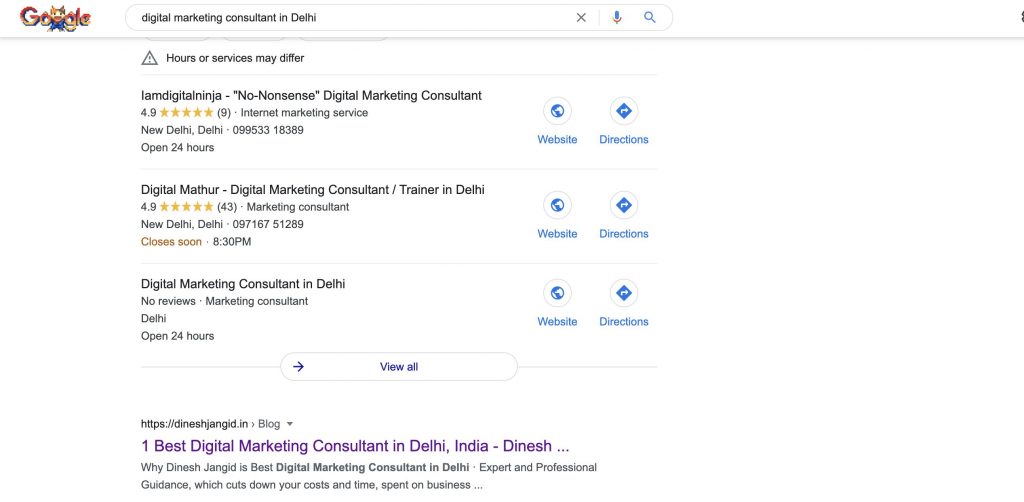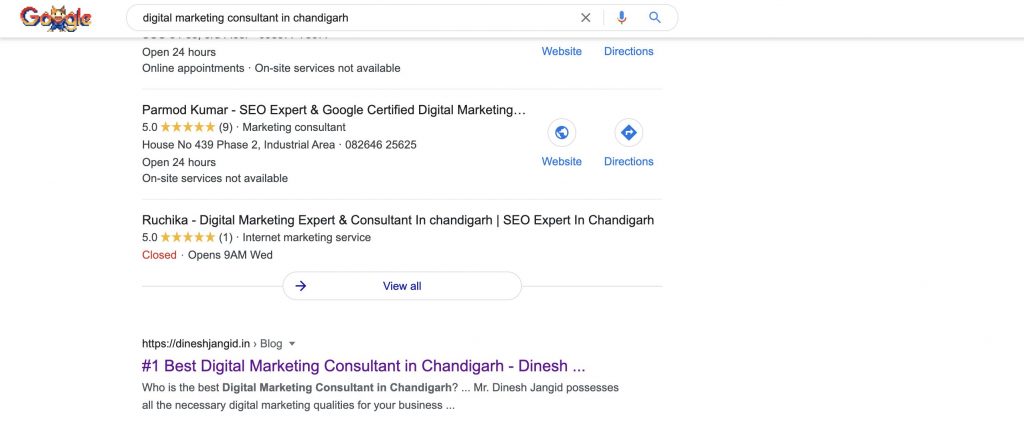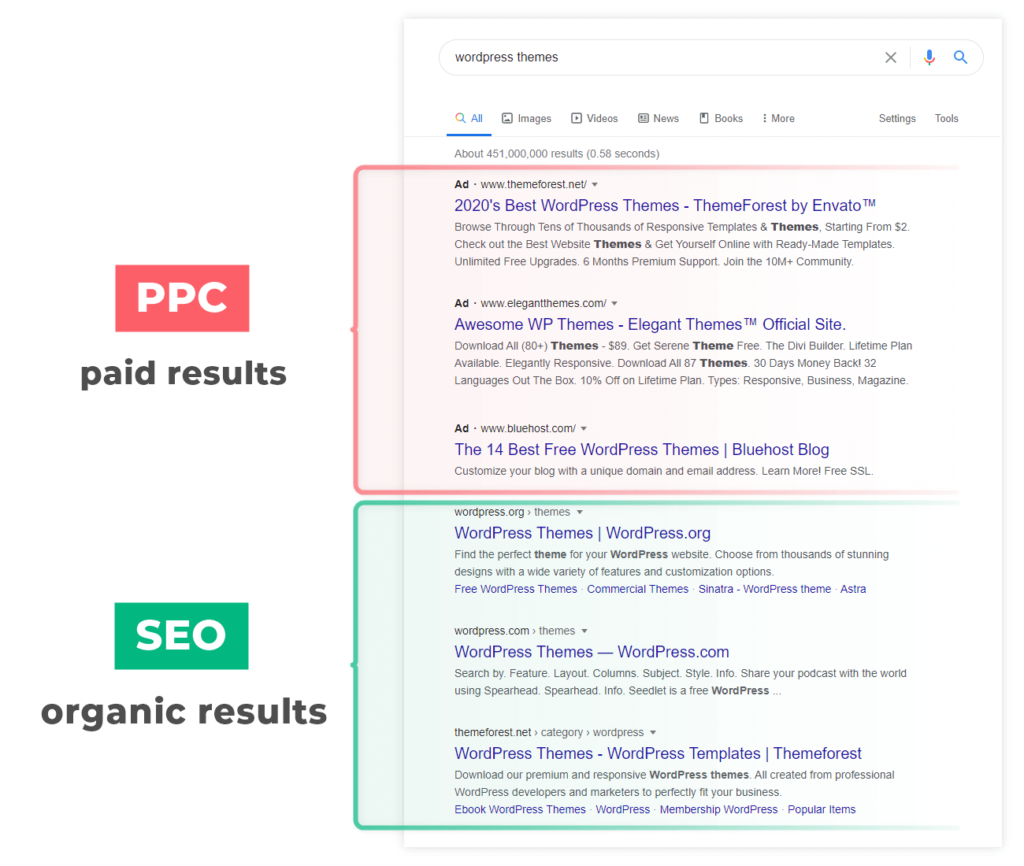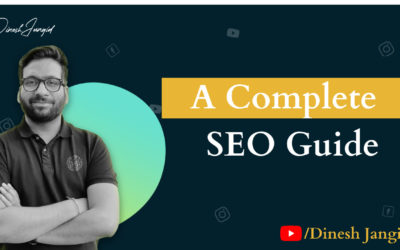
Everyone wants to rank their website/ Blog on the top of Google but Ranking a website on Google’s first page is not an easy task.
Hello everyone, my name is Dinesh Jangid. In today’s article, I will share with you 200 SEO Ranking Factors 2025 that will actually work to rank your website on the Google first page.
In today’s guide, I have covered the various points that you wanted to know to rank on Google.
- What is SEO?
- Why We Need to Rank On Google?
- 200 SEO Ranking Factors 2025
- Conclusion
- FAQ
Let’s jump into the guide.
About the Author
Using the same 200 SEO Ranking Factors 2025, I have ranked various my website keywords on Google’s First page.
Hi, my name is Dinesh Jangid. I have been a Digital Marketing Trainer, Consultant, and SEO Expert for the last 8 years.
I launched my first blog in the year 2013, and I have generated a lot of traffic on my blogs using SEO knowledge.
At that point I realized that SEO is the one key thing to generating organic (unpaid) traffic, and then I started learning as much about SEO as I could.
After years of hard work and experimentation, I had success with SEO…
#1 Ranking for Apple Search Engine Ranking Factors.

#1 Ranking for Digital Marketing Consultant in Delhi.

#1 Ranking for Digital Marketing Consultant in Noida.

#1 Ranking for Digital Marketing Consultant in Chandigarh.

200 SEO Ranking Factors 2025
In the 200 SEO Ranking Factors 2025 firstly we will discuss the What is SEO.
SEO is also known as Search Engine Optimization.
Search Engine Optimization is the process of making your website according to the Search engines (Like Google, Bing, Yahoo, etc.). If we try to make our website as per the search engine then we will generate quantity and quality of traffic and will get a better ranking on SERP (Search Engine Result Page).
SEO is an organic, natural, or Unpaid process which means we do not need to pay any amount to Google to rank our website on the first page. It completely depends on your efforts and how much you follow the 200 SEO Ranking Factors.
Search Engine Optimization (SEO) Always show the organic results on SERP not Paid Results.

Search Engine Optimization is commonly two types but in today’s era, SEO has three types.
- On-Page SEO
- Off-Page SEO
- Technical SEO
Now, we need to understand, what exactly the meaning of On-Page, Off-Page, and Technical SEO is. Every type of SEO has its own importance. If you want to rank your website on Google’s first page then we need to follow all the 200 SEO Ranking Factors of Search Engine Optimization.
On-Page SEO
On-Page SEO is also known as “on-site SEO”. In the On-Page SEO, we try to make our web page better. Here are some On-page SEO factors like Title, subheading, multimedia, URL, Mata Tags, etc.
Here are some factors of On-page SEO.
- Keyword Research
- Mata Tags
- Heading and Sub Headings
- Internal Links
- External Links
- Multimedia
- The keyword as Image ALT Tag
- SEO Title
- Content
- Length of Article etc
The main goal of On-Page Search Engine Optimization is to provide better and more informative content for search engines and users.
Off-Page SEO
Off-Page SEO is also known as “off-site SEO”. In the Off-page SEO, we try for a better ranking on Search engines by putting extra effort outside of the website. We try to make powerful links from other related websites. These powerful links are called Backlinks.
With help of off-page SEO, we trying to build credibility, authority, popularity, and relevance for both users and search engines.
Here are some Off-page factors
- Social Bookmarking
- Guest Blogging
- Article Submission
- PR (Press Release)
- Web 2.0
- Email Outreach
The main goal of Off-Site Search Engine Optimization is to provide trust and authority for search engines and users.
Technical SEO
In Technical SEO we try to solve technical problems of the website like website code errors, server-side errors, etc. The main aim of Technical Side SEO is to improve crawling and indexing.
Here are some Technical SEO factors
- Site Speed
- White Space
- Robots.txt
- Structured Data (Schema)
- Sitemap
- Conical Issue
- Code Error
Why do We Need to Rank on Google’s First Page?
On SERP you have seen two types of results Organic and Inorganic. Every business owner wants to rank on Google’s first page because ranking on top of Google is always profitable.
Let’s suppose
My blog’s keyword “Digital Marketing Consultant in Delhi” ranked on Google’s first page. Now, understand how this ranking is beneficial for me.
If my keyword ranking is on the first number then people who want to hire a digital marketing consultant in Delhi then they make a query on Google.
Now, my website keyword is shown on the first number on SERP, they click on my website. Then my page is valuable for them try to contact me.
Now, they will pay me for the hiring.
That’s why we need to rank on Google’s first page.
How to Rank on Google – 200 Google Ranking Factors 2025 (Video)
200+ SEO Ranking Factors 2025 to Rank on Google
Before the div into the SEO Ranking Factors 2025 check out my Complete SEO Guide.
- Domain Age
- Keyword Appears in Top Level Domain
- Keyword As First Word in Domain
- Domain registration length
- Keyword in Subdomain
- Domain History
- Exact Match Domain
- Public vs. Private WhoIs
- Penalized WhoIs Owner
- Country TLD extension
- Keyword in Title Tag
- Title Tag Starts with Keyword
- Keyword in Description Tag
- Keyword Appears in H1 Tag
- Keyword Appears in H2 Tag
- Content-Length 1836
- Content Pattern
- Table of Contents
- Keyword Density
- Latent Semantic Indexing Keywords in Content (LSI)
- LSI Keywords in Title and Description Tags
- Page Covers Topic In-Depth
- Page Loading Speed via HTML
- Page Loading Speed via Chrome
- Use of AMP
- Entity Match
- Google Hummingbird
- Duplicate Content
- Rel=Canonical
- Image Optimization
- Content Recency: its shows the time when content is updated or published
- Magnitude of Content Updates
- Historical Page Updates
- Keyword Prominence: Keyword in the first 100 words
- Outbound Link Quality
- Outbound Link Theme: related link page
- Grammar and Spelling
- Syndicated Content: copy from other indexed pages
- Mobile-Friendly Update: Update name Mobilegeddon
- Mobile Usability
- Hidden” Content on Mobile
- Helpful “Supplementary Content: content is an indicator of a page’s quality
- Content Hidden Behind Tabs
- Number of Outbound Links
- Multimedia
- Number of Internal Links Pointing to Page
- Quality of Internal Links Pointing to Page
- Broken Links
- Reading Level
- Affiliate Links
- HTML errors
- Domain Authority
- Page’s PageRank
- URL Length
- URL Path
- Human Editors
- Page Category
- WordPress Tags
- Keyword in URL
- URL String (BreadCum)
- References and Sources
- Bullets and Numbered Lists
- Priority of Page in Sitemap
- Too Many Outbound Links
- Quantity of Other Keywords Page Ranks For
- Page Age
- User-Friendly Layout
- Parked Domains
- Useful Content
- Content Provides Value and Unique Insights
- Contact Us Page
- About Us page
- Term and Condition
- Disclaimer
- Domain Trust/ TrustRank
- Site Architecture
- Site Updates
- Presence of Sitemap
- Site Uptime
- Server Location
- SSL Certificate
- Duplicate Meta Information On-Site
- Mobile Optimized
- YouTube
- Site Usability: A site that’s difficult to use or to navigate can hurt rankings
- Use of Google Analytics and Google Search Console
- User reviews/Site reputation
- Linking Domain Age
- # of Linking Root Domains
- # of Links from Separate C-Class IPs
- # of Linking Pages: Same link page
- Backlink Anchor Text
- Alt Text/ Tag
- Links from .edu or .gov Domains: Not affected
- Authority of Linking Page
- Authority of Linking Domain
- Links From Competitors
- Links from “Expected” Websites
- Links from Bad Neighborhoods
- Guest Posts
- Links From Ads: nofollowed
- Homepage Authority
- Nofollow Links
- Diversity of Link Types
- Sponsored Links” Or Other Words Around Link: Decrease the value
- Contextual Links
- Excessive 301 Redirects to Page
- Internal Link Anchor Text
- Link Title Attribution: weak relevancy signal
- Country TLD of Referring Domain
- Link Location In Content
- Link Location on Page
- Linking Domain Relevancy: similar niche is significantly more powerful than a link
- Page-Level Relevancy
- Keyword in Title
- Positive Link Velocity
- Negative Link Velocity
- Links from “Hub” Pages
- Link from Authority Sites
- Linked to as Wikipedia Source
- Co-Occurrences
- Backlink Age
- Links from Real Sites vs. “Splogs
- Natural Link Profile
- Reciprocal Links
- User Generated Content Links
- Links from 301
- Schema.org Usage: Rating
- TrustRank of Linking Site
- Number of Outbound Links on Page
- Forum Links: its bad
- Word Count of Linking Content
- Quality of Linking Content
- Sitewide Links
- RankBrain
- Organic Click Through Rate for a Keyword
- Organic CTR for All Keywords
- Bounce Rate/ Exit Rate
- Direct Traffic
- Repeat Traffic
- Pogo sticking
- Blocked Sites
- Chrome Bookmarks
- Number of Comments
- Dwell Time: how long people spend on your page when coming from a Google search
- Query Deserves Freshness
- Query Deserves Diversity
- User Browsing History
- User Search History
- Featured Snippets
- Geo-Targeting
- Safe Search
- Google+ Circles
- YMYL” Keywords
- DMCA Complaints
- Domain Diversity: The so-called “Bigfoot Update” supposedly added more domains to each SERP page.
- Transactional Searches
- Local Searches
- Top Stories box
- Big Brand Preference
- Shopping Results
- Image Results
- Easter Egg Results
- Single Site Results for Brands
- Payday Loans Update
- Brand Name Anchor Text
- Branded Searches
- Brand + Keyword Searches: example: “Backlinko Google ranking factors” or “Backlinko SEO”
- The site Has a Facebook Page and Likes
- The site has Twitter Profile with Followers
- Official LinkedIn Company Page
- Known Authorship
- Legitimacy of Social Media Accounts
- Brand Mentions on Top Stories
- Unlinked Brand Mentions
- Brick and Mortar Location
- Panda Penalty
- Links to Bad Neighborhoods
- Redirects
- Popups or “Distracting Ads
- Interstitial Popups: Google may penalize sites that display full-page
- Site Over-Optimization
- Gibberish Content
- Doorway Pages
- Ads Above the Fold
- Hiding Affiliate Links
- Fred
- Affiliate Sites
- Autogenerated Content
- Excess PageRank Sculpting
- IP Address Flagged as Spam
- Meta Tag Spamming
- Unnatural Influx of Links
- Penguin Penalty
- Link Profile with High % of Low-Quality Links
- Links From Unrelated Websites
- Unnatural Links Warning
- Low-Quality Directory Links
- Widget Links
- Links from the Same Class C IP
- Poison” Anchor Text
- Selling Links
- Google Sandbox
- Disavow Tool
Conclusion
If you want to rank on Google first then follow these 200 SEO Google Ranking Factors in2025. If you will follow the all factors then you will definitely rank on Google’s first page.
FAQ
With the help of SEO, we try to make our website as per the search engine.
Yes, I have already applied the 200 SEO Ranking Factors on my blog and my keywords ranked on google’s first page.
Yes, it is very important to get traffic.



0 Comments